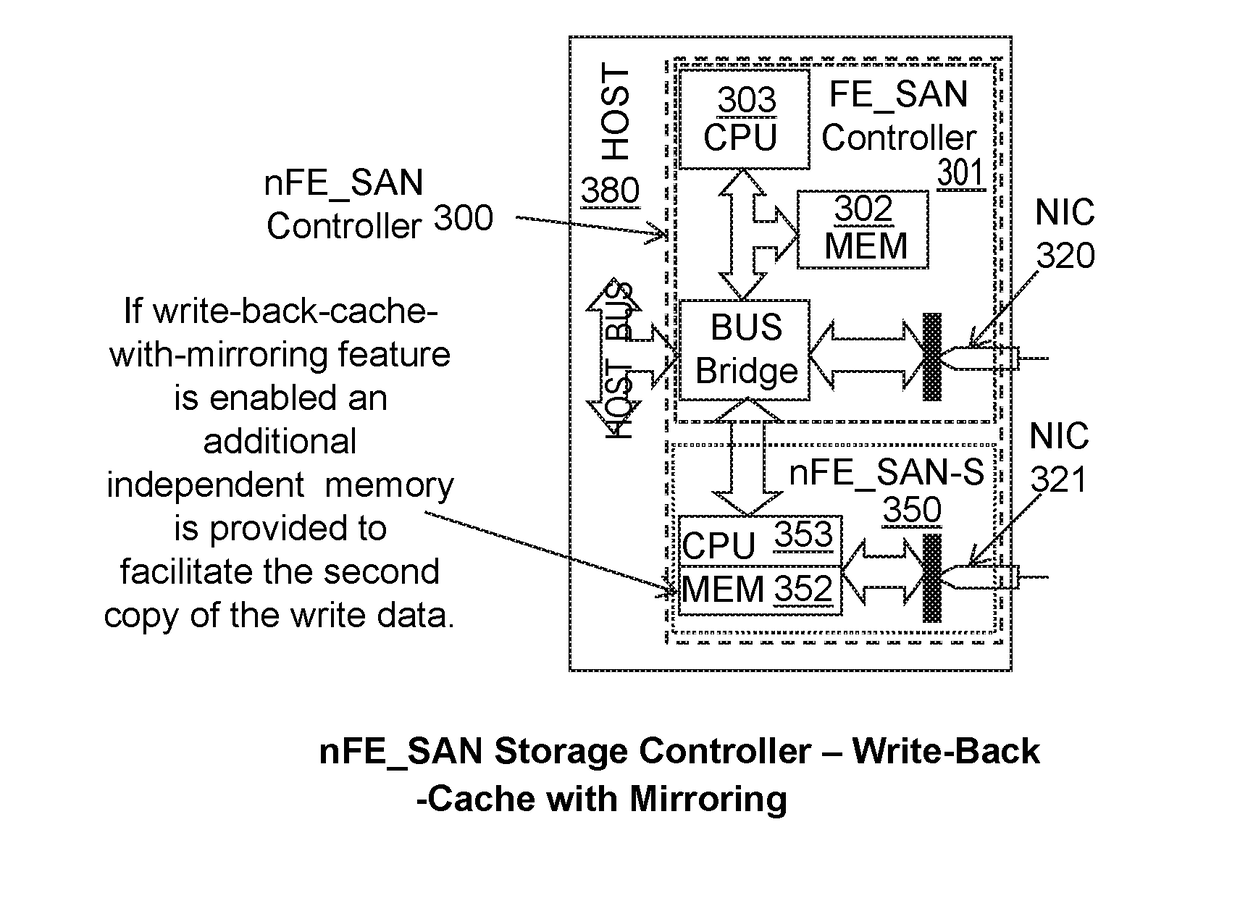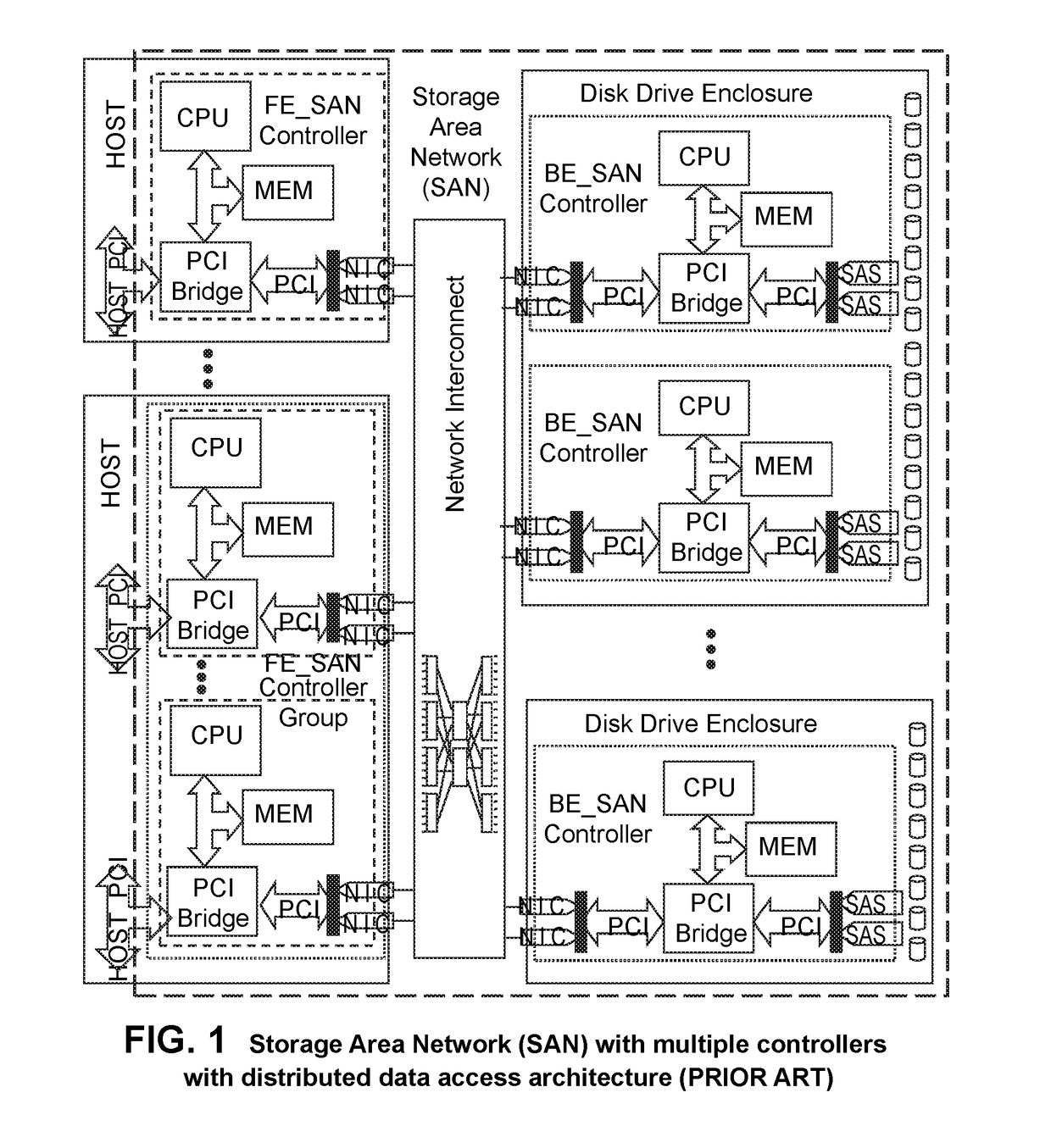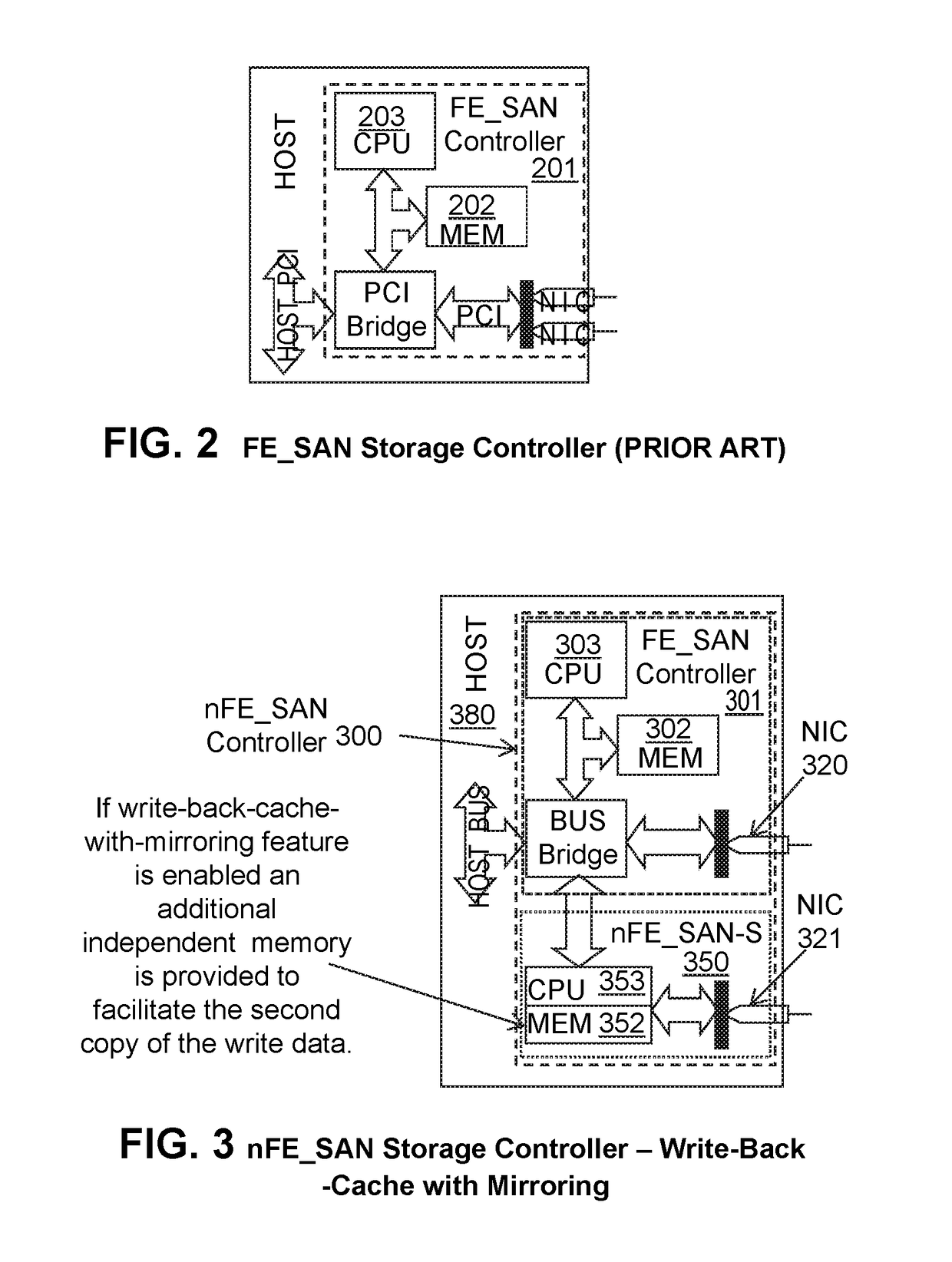Scalable data access system and methods of eliminating controller bottlenecks
- Summary
- Abstract
- Description
- Claims
- Application Information
AI Technical Summary
Benefits of technology
Problems solved by technology
Method used
Image
Examples
Embodiment Construction
” message can be sent to the host.
[0028]FIG. 17 represents a dataflow diagram of write operations showing time saved and overlap times of write operations using the present system. Because two copies of the data are maintained by the nFE_SAN controller “COMMAND COMPLETE” message can be returned to the host as soon as data transfer from the host is done and write lock(s) acquired from (n)BE_SAN controller(s).
[0029]FIG. 18 depicts Data Access System with first and second cache 1812 and 1818, first and secondary power system 1810 and 1816, first and second network interface 1814 and 1820, and first and secondary processor 1824 and 1826 together form an nFE_SAN controller as herein described.
DETAILED DESCRIPTION OF THE EMBODIMENTS
[0030]FIGS. 3, 3a, 3b, 6, 7, 8, 9, 10, 11, 12, 13, 14, 15, 17, and 18 present a system. There are two parts to this system. FIGS. 3, 3a, 6, 7, and 17 reveal improvements over the prior FE_SAN controller of U.S. Pat. No. 9,118,698, FIG. 3b depicts improvements o...
PUM
 Login to View More
Login to View More Abstract
Description
Claims
Application Information
 Login to View More
Login to View More - R&D
- Intellectual Property
- Life Sciences
- Materials
- Tech Scout
- Unparalleled Data Quality
- Higher Quality Content
- 60% Fewer Hallucinations
Browse by: Latest US Patents, China's latest patents, Technical Efficacy Thesaurus, Application Domain, Technology Topic, Popular Technical Reports.
© 2025 PatSnap. All rights reserved.Legal|Privacy policy|Modern Slavery Act Transparency Statement|Sitemap|About US| Contact US: help@patsnap.com



